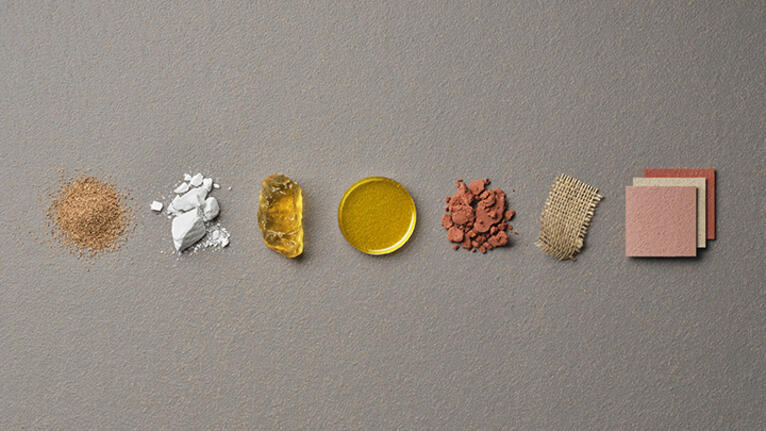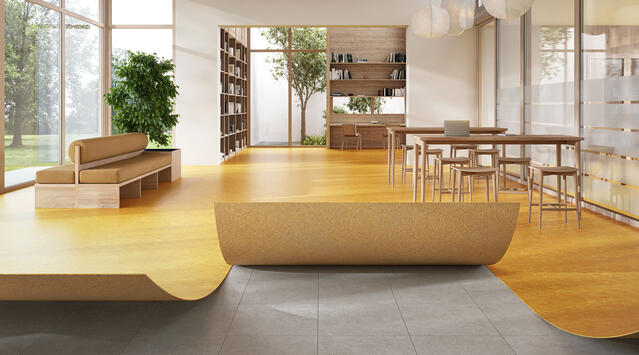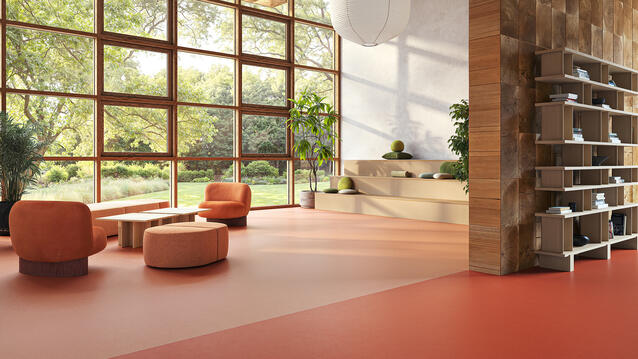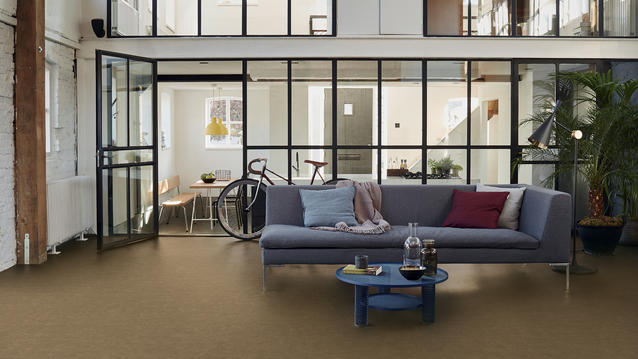Tarkett sets a new industry benchmark by achieving the world’s first carbon-negative linoleum flooring range covering all stages of the life cycle*.
While some manufacturers have reached ‘cradle-to-gate’ carbon negativity for their linoleum flooring products, Tarkett Lino goes further – achieving carbon negativity across all stages of the life cycle, from the responsible sourcing of renewable raw materials to end-of-life deconstruction, recycling and reuse.
This level of carbon negativity is possible thanks to Tarkett Lino’s circular design and systems, which enable the flooring to be recovered at the end of its life before being recycled and reused at Tarkett’s dedicated facilities, in a truly closed-loop system that keeps materials – and the carbon they store – in continuous circulation.
The milestone has been externally verified with our new Environmental Product Declaration (EPD N° 4791835705.101.1).
Tarkett has been producing linoleum in Italy since 1898, and still uses its original linoleum recipe: a blend of natural, renewable materials, including cork, linseed oil, pine rosin, and wood powder.
We are extremely proud to have achieved carbon negativity with our linoleum flooring. It’s a major milestone that reflects decades of development and investment in our linoleum product and production processes. – Thomas Leneveu, Vice President Commercial Business Unit of Tarkett EMEA
To keep track of the carbon generated and saved over a product’s lifecycle, we calculate and externally verify the ‘Circular Carbon Footprint’ of our flooring ranges.
Our latest externally verified Environmental Product Declaration (EPD N° 4791835705.101.1) has confirmed that Tarkett Lino 2.5 mm achieves a negative Circular Carbon Footprint of -1.92 kg CO2eq per m2, covering all stages of its life cycle, which are explained below.
With regards to the circular journey of linoleum, Thomas Leneveu adds: “It is critical to understand that carbon negativity can only be achieved if the linoleum is returned to us at the end of its life, as part of a closed-loop process. Tarkett’s ReStart take-back and recycling programme is the cornerstone of this circular system, powered by collaboration between Tarkett and our end users, who return their lino at end of life, to become the next generation of flooring. True circularity relies on close partnerships. Whether it’s using materials from other industries’ waste streams, or working with customers to return their flooring to us, the opportunities for progress are huge when manufacturers, customers and partners work together to keep materials, and their stored carbon, in continuous circulation.”
*For Tarkett Linoleum ranges (2–4,4 mm), according to the Environmental Product Declaration (EPD N° 4791835705.101.1) externally verified by EPD programme operator UL. Based on the total carbon footprint (Modules A-D) with a closed-loop circular recycling scenario facilitated through Tarkett’s ReStart® recycling and take-back programme.



